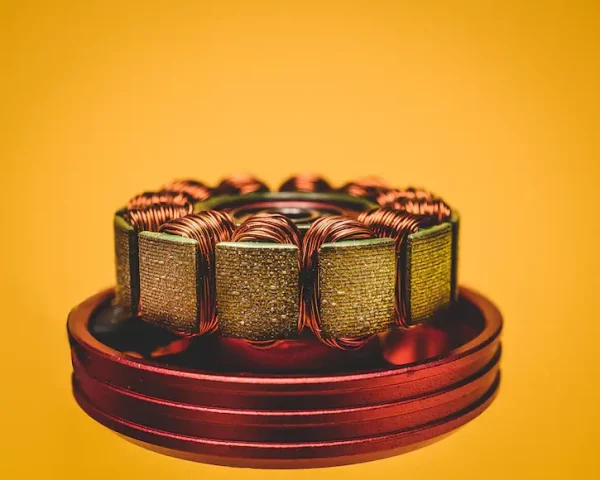For the sake of the motorbike electrical system, the rectifier is indeed the most critical part, which no one can ignore, and that’s why the question arises of What Causes a Rectifier to Burn Out and How to Prevent it?
There are several reasons why a rectifier may burn out, including the use of faulty batteries, unnecessary installation of electrical devices, poor heat dissipation, malfunctioning stator, and the use of low-quality components. Fortunately, you can lower the risk of rectifier burnout by improving heat dissipation, avoiding the installation of additional devices, and conducting regular inspections. By taking these preventative measures, you can help ensure the longevity of your rectifier.
Let’s consider what it means and what you can do about it.
While writing this post, I leave no stone unturned so you can know everything about the reasons behind rectifier burnout and its prevention steps.
Attention all US riders! 🌟 Stay ahead of the game as our website delves into the causes of rectifier burnouts and effective prevention methods. From diagnosing common triggers to ensuring a smooth and reliable ride, our expert insights empower you with the knowledge to protect your bike’s electrical system. But that’s not all! Don’t forget to explore customized motorbike insurance options, ensuring you stay protected while keeping your bike running strong. Don’t miss this exciting opportunity to gear up for success and ride with unbeatable assurance! 🔥🔍🛡️🎯
Table of Contents
What Causes a Rectifier to Burn Out and How to Prevent it?
So far, you understand some little reasons why the motorbike rectifier can overheat; now, here’s a detailed explanation of why your motorbike rectifier can cause overheating.
| Reasons Behind Rectifier Overheating: | Details: |
| Installing additional devices | Installing necessary or additional devices puts extra stress on the motorbike electrical system, including the rectifier, to convert the AC to DC, which causes it to be overworked. |
| Using the bad battery | Bad batteries don’t charge properly and continuously take the DC from the rectifier at high volume and causing the rectifier to overheat. The best you can do is to avoid using a bad battery for the sake of electrical component health. |
| Poor heat dissipation | Manufacturers made air fins or cooling fins to cool the motorbike’s internal parts. If the motorbike rectifier keeps overheating, you should inspect the airflow passage or cooling fins. |
| Malfunctioned stator | Ideally, the stator and rectifier should work together to offer a content DC to the battery so that the whole system can be significantly worked. But sometimes, because of a malfunctioning stator, there’s a voltage spike causing the rectifier to overheat. |
| Using poor-quality rectifiers | Cheap rectifiers are made from poor-quality components, which are more likely to fail and are prone to overheating. Components such as faulty diodes can cause a malfunction in the rectifier and can cause overheating. |
Installing Additional Devices:
One of the most significant reasons why motorbike rectifiers are becoming overheating is because of installing additional devices.
Installing necessary or additional devices puts extra stress on the motorbike electrical system, including the rectifier, to convert the AC to DC, which causes it to be overworked.
Because of this overworking, the motorbike rectifier starts overheating, decreasing its lifespan to half. And that’s why experts recommend not installing additional devices on your motorbike.
Or the best you can do is read the manual to know the current capacity of the motorbike rectifier or take advice from the manufacturer before installing additional devices to the motorbike.
Using Bad Battery:
Indeed installing additional unnecessary electrical components can harm the motorbike rectifier, but do you know that using a bad battery can also cause the rectifier to become hot?
Bad batteries don’t charge properly and continuously take the DC from the rectifier at high volume and causing the rectifier to overheat. The best you can do is to avoid using a bad battery for the sake of electrical component health.
Poor Heat Dissipation:
So far, you understand that installing additional devices and using a bad battery can cause the motorbike rectifier to overheat, but do you know that poor heat dissipation can also cause the rectifier to overheat?
Motorbike electrical system heating is not uncommon; the continual usage of the motorbike causes heating of every part of the motorbike, from the engine to the battery, every part becomes hot for the continuity working of the motorbike.
And that’s why manufacturers made air fins or cooling fins for cooling the internal parts of the motorbike, if the motorbike rectifier keeps overheating, you should inspect the airflow passage or cooling fins.
Ideally, the airflow passage should be well-cleaned and not hindered by dust and dirt. Inspect the airflow passage and clean all the finds and passages.
Malfunction Stator:
Indeed poor heat dissipation can be the reason behind motorbike overheating, but did you know that malfunctioning stators can also cause motorbike rectifiers to overheat?
Ideally, the stator and rectifier should work together to offer a content DC to the battery so that the whole system can be significantly worked, but sometimes, because of a malfunctioning stator, there’s a voltage spike causing the rectifier to overheat.
Sudden voltage spikes for a longer time cause the motorbike rectifier to malfunction and overheat, in the worst case, the malfunctioned stater can cause an overheated battery and later malfunction.
And that’s why experts always recommend inspecting the current status of the motorbike stator to protect the rectifier in the longer term.
Using Poor Quality Rectifier Parts:
So far, you understand that a malfunctioned stator can also cause the rectifier to overheat and malfunction. But do you know that using poor-quality rectifier parts can also cause rectifier overheating?
Cheap rectifiers are made from poor-quality components, which are more likely to fail and are prone to overheating, components such as faulty diodes can cause a malfunction in the rectifier and can cause overheating.
And that’s why experts always recommend spending more money to get good quality rectifier components and the whole rectifier to protect the entire electrical system and battery.
How to Prevent the Rectifier from Burning Out?
So far, you understand some causes of rectifier cause burn out. Still, the central fruit part protects the rectifier from burning out so that the motorbike electrical system can work effectively without any problems.
You can prevent the rectifier from burning out by using genuine components for the rectifier, doing regular inspection and maintenance, avoiding installing additionally unnecessary electrical devices, and improving heat dissipation. Although these steps aren’t 100% fail-proof, you can significantly reduce the risk of rectifiers burning out.
Worries not; I’ve mentioned all prevention methods below in detail so that you can prevent the motorbike rectifier from burning out.
Avoiding Installing Additional Devices:
One of the reasons why the rectifier is overheating is because of installing additional devices, and thus, avoiding installing additional devices to prevent the rectifier from burning out makes sense.
Avoiding installing additional devices protects the rectifier from passing out the current beyond its capacity, avoiding installing additional devices also protects the stator’s health.
Refer to the motorbike manual or manufacturer to know the capacity of the stator and rectifier to boost the motorbike’s electrical system.
Improving Heat Dissipation:
As mentioned in the above section, the heat dissipation feature helps to cool down the engine’s internal parts and prevent them from burning.
You should inspect the air passage and clean it efficiently to cool down the engine’s internal parts so that no internal parts can burn out.
Regular Inspection and Maintenance:
Regular inspection and maintenance help to reduce the risk of the engine and electrical parts. It involves quick maintenance after inspecting parts, such as the battery, stator, rectifier, and other components.
Also, read my previous post where I discussed how motorbike battery charges while riding the motorbike, CLICK HERE to read more.
Frequently Asked Questions:
How avoiding installing additional devices can protect motorbike rectifiers from overheating?
Avoiding installing additional devices protects the rectifier from passing out the current beyond its capacity. Avoiding installing additional devices also protects the stator’s health.
How doing regular inspections can protect motorbike rectifiers from overheating?
Regular inspection and maintenance help to reduce the risk of the engine and electrical parts. It involves quick maintenance after inspecting parts, such as the battery, stator, rectifier, and other components.
How does using poor rectifier parts malfunction rectifier cause overheating?
Cheap rectifiers are made from poor-quality components, which are more likely to fail and are prone to overheating. Components such as faulty diodes can cause a malfunction in the rectifier and can cause overheating.
How malfunctioning stator can make a motorbike rectifier overheat?
Ideally, the stator and rectifier should work together to offer a content DC to the battery so that the whole system can be significantly worked. But sometimes, because of a malfunctioning stator, there’s a voltage spike causing the rectifier to overheat.
How using a bad battery can cause a motorbike rectifier to overheat?
Bad batteries don’t charge properly and continuously take the DC from the rectifier at high volume and causing the rectifier to overheat. The best you can do is to avoid using a bad battery for the sake of electrical component health.
Final Verdict:
What Causes a Rectifier to Burn Out and How to Prevent it? Some reasons behind the rectifier burning out are using bad batteries, installing unnecessary additional electrical devices, poor heat dissipation, malfunctioning stator, and using poor quality rectifier components.
Fortunately, by improving the heat dissipation, avoiding installing additional devices, and through regular inspection, you can reduce the chance of the rectifier burning out.
Ensure you recommend the motorbike manual or manufacturer to know the capacity of the rectifier before installing additional electrical devices.
John, this side! My passion for motorbikes started when I was 12. I experienced many accidents and even lost some friends too. And it inspired me to create this website so that no parents in this world would lose their child while enjoying riding.


